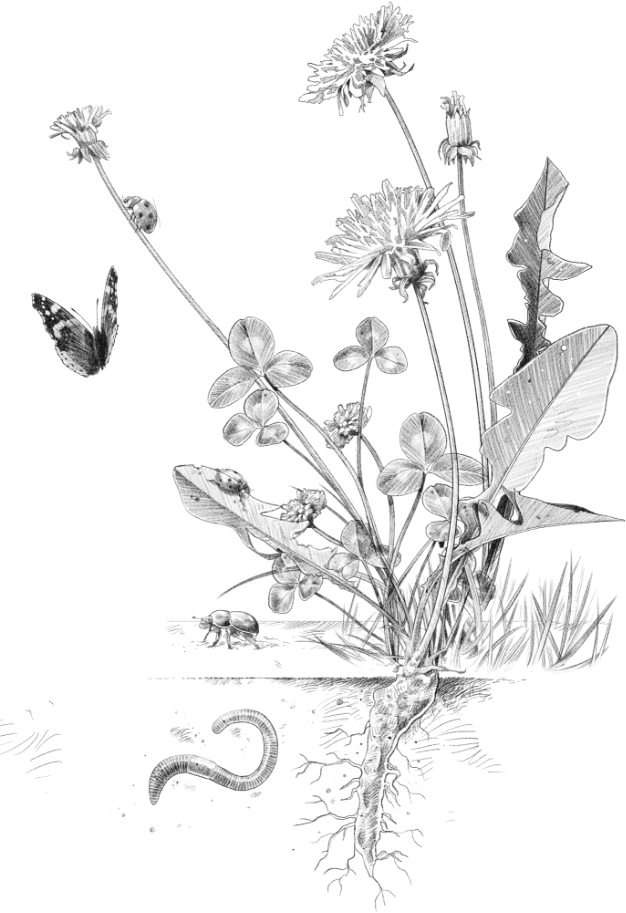Full of Life
A healthy meadow is more than a patch of mowed grass.
We like to see cows grazing in a lush meadow of grass, clovers, flowers and herbs. Between the grass, a variety of ground insects and above them the buzzing sound of bees, bumblebees and dragonflies. Above the meadow, plenty of birds come to rest, forage and nest. Surrounding the meadow are healthy ditches with waving reeds and blooming water lilies. Where no water flows, we see varied field edges in the form of flower strips, hedges, wooded banks and unmown fences, in which a wealth of animal species live and find safe passage and shelter. By designing our meadows, water and field edges in this way, we provide a dairy farm that works in harmony with nature and promotes and protects the biodiversity of our agricultural landscape.
Welcome to the world(s) of Hooidammer!
